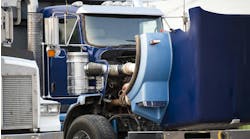Over the course of their lifetimes, transportation companies get many proposals from banks. But a business searching for a suitable financial provider is a lot like a person searching for a suitable mate: A long courtship doesn’t always end in a meaningful relationship.
In pursuing a business, banks survey the market to find potential new clients by monitoring industry trade publications, making phone calls, and seeking referrals from accounting, law, and insurance firms, as well as from existing customers and many other sources. With a prospect in site, the banker then gathers as much publicly available information as possible before finally arranging a face-to-face meeting with a business’s key decision‑makers.
For the bank, this is merely the first step in creating a dialogue, establishing mutual confidence, and deepening its understanding of the business. Seasoned bankers use this time to become familiar with the company’s principals and other relevant parties, as well as to find out the business’s short-, medium-, and long-term goals. It’s all part of the crucial get-to-know-you process – for the bank and for the business.
Once confidence is built and connections are forged, only then are the company and bank ready to talk financials.
Consider these questions when exploring whether a finance provider matches your company’s current and/or future needs:
- Does the bank have transportation industry experts (i.e., sales, risk, and portfolio management specialists) who can recognize the trends and fluctuations in your business to support the company’s needs during various stages of growth and business cycles?
- Does the lender provide research and data to help you make smart decisions? Do they attend and actively participate in transportation industry events and trade shows?
- Does the finance team offer a comprehensive suite of products, or would you have to find additional products and services elsewhere?
- Is your potential lender nearby so they understand the specific features of your market? Can they address your questions locally and quickly?
- Is the lender open to connecting customers with other potential business providers, investors, or like-minded people locally and nationally?
- To help you meet your growth goals, does the prospective financial provider have the resources and innovative services (such as treasury management services to manage cash flow and optimize working capital), which could help your company compete in the market?
- Can the bank quickly address your needs for acquisitions, equipment and property additions, and needed loan term modifications?
Companies should approach the relationship-building phase with an open mind, even if there is no immediate need for a new financial provider. Even if the bank is not a good fit now, building a solid foundation by asking the right questions eventually can lead to a long and profitable future together.



